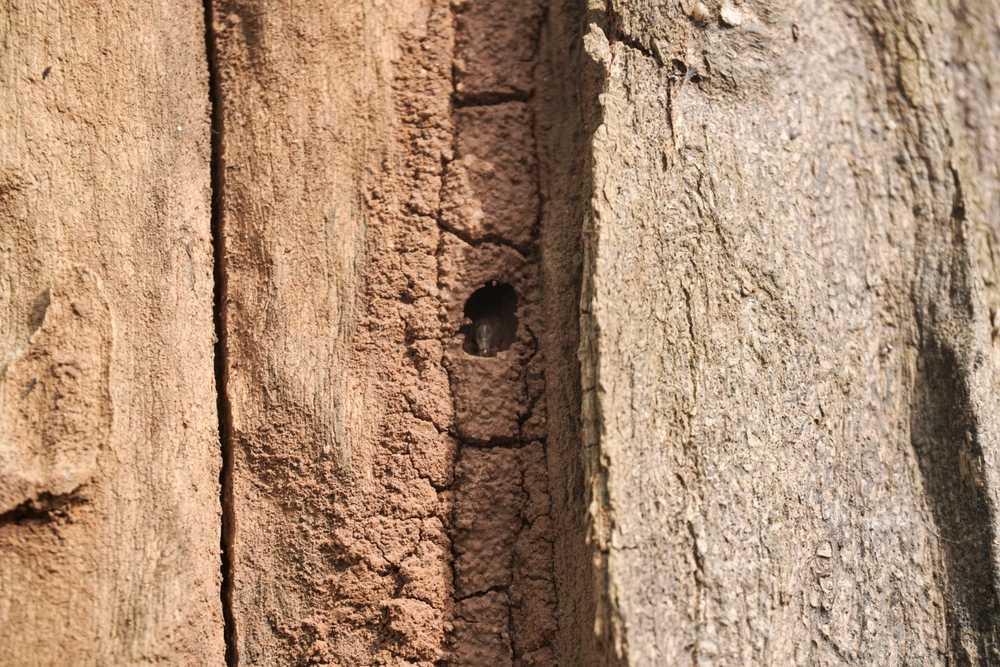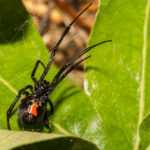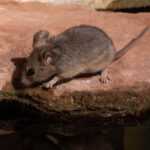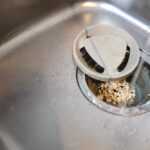Termite Holes: Signs, Damage & How to Fix Them
Learn how to identify termite holes, the damage they cause, and how to treat and prevent infestations before they spread through your home.
Identifying and Treating Termite Holes in Your Home Walls
If you’ve noticed small holes in your walls, you might be dealing with a termite problem. Termite holes are tiny openings where termites exit after tunneling through your walls. Recognizing these holes early is crucial to preventing serious damage.
- Termite holes in walls, such as small pinholes and mud tubes, signal active infestations that require immediate attention to prevent significant damage.
- Different types of termites, particularly subterranean and drywood termites, have distinct behaviors and can cause varying levels of structural damage.
- Regular inspections, along with professional pest control services, are crucial for early detection and effective treatment of termite infestations to avoid costly repairs.
Recognizing Termite Holes in Walls
One of the first indicators of a termite problem is the appearance of tiny holes in your walls. These are often referred to as swarmer exit holes and signal the presence of termites. These small, round, or oblong pinholes are created by termites as they tunnel through the drywall, leaving behind evidence of their destructive hole paths.
Termite holes are more than just cosmetic issues; they hint at significant termite activity within your walls that needs immediate attention. Beyond these visible holes, you might notice your drywall sagging or discoloring, which often resembles water damage. Bubbling or peeling paint can also be a result of termites tunneling just beneath the surface. Recognizing these signs early can help avoid severe termite damage.
Moreover, the presence of similar pinholes in nearby wood framing is a strong indication that termites have infested your walls. Mud tubes along your baseboards are another clear indication of termites. These mud tubes serve as protective tunnels for termites, allowing them to travel between their nests and food sources without being exposed.
Contact a termite control provider immediately if you observe any of these signs. Early recognition can prevent further damage and save on costly repairs.
Common Signs of Termite Activity
Termites are sneaky pests that often go unnoticed until significant damage has been done. One common sign of termite activity is hearing a hollow sound from within your walls, a result of termites eating through wood and communicating with each other. Additionally, blistering paint can indicate that termites are burrowing just beneath the surface of your drywall.
Mud tubes along baseboards are another clear indication of termite presence. These tubes are constructed by subterranean termites to travel between their colonies and food sources without being exposed to air. If you notice fine powder dust at the base of your walls, it could be a sign that termites are tunneling through wood, leaving behind a sawdust-like residue.
Other indicators include the presence of swarmer termites or their broken-off wings, which you might find on the floor or window ledges. Termite droppings, known as frass, are small dark pellets that can signal an active infestation. Recognizing these signs early helps in detecting infestations and preventing further damage.
Types of Termites and Their Impact on Walls
Not all termites are created equal; different types have different behaviors and impacts on your home. Knowing these differences is vital for effective termite control. The two main types we will discuss are subterranean termites and drywood termites.
Subterranean termites are notorious for causing extensive structural damage due to their nesting habits and need for moisture. On the other hand, drywood termites thrive in wooden structures without needing soil contact, often causing hidden and long-term damage.
Subterranean Termites
Subterranean termites typically build their nests underground, accessing your home through mud tubes that protect them from drying out. These termites prefer loose, damp soil, which provides the moisture they need to survive. You might find wood pulp or small insect eggs around these mud tubes, indicating their presence.
Subterranean termite nests on your property signal active infestation. These pests are a major cause of structural damage in U.S. homes, often leading to costly repairs. Their ability to stay hidden while causing a nasty surprise and extensive damage underscores the need for early detection and intervention of termite colonies.
Drywood Termites
Unlike their subterranean counterparts, drywood termites do not require contact with soil to establish their colonies. They thrive within wooden structures, including studded walls, attics, and furniture. These termites can cause significant damage over time, often going unnoticed until it’s too late.
Drywood termite infestations develop slowly, making them difficult to spot at first. They leave behind frass, which is a key indicator of their presence. If you notice tiny piles of feces resembling sawdust, it’s a sign that drywood termites might be feeding on your home.
Understanding these termites’ unique behaviors aids in addressing the problem effectively.
Inspecting Your Home for Termite Infestations
Regular home inspections help catch termite infestations early. Mud tubes created by subterranean termites along your foundation are a telltale sign. These tubes serve as pathways to food sources and are a clear indication of termite activity. Termite damage often resembles water damage, with buckling wood and discolored drywall being common signs.
Performing regular visual inspections both inside and outside your home can help identify early signs of termite activity. Focus on moisture-prone areas like kitchens and bathrooms, where plumbing can grant access to wood structures. External walls, including siding and foundation areas, should also be checked for structural damage.
Consult a professional for a thorough inspection if you notice potential termite activity. Professional pest control services can identify and treat infestations that might go unnoticed by an untrained eye. DIY treatments may seem cost-effective, but they often lead to higher long-term costs due to potential structural damage.
Comprehensive pest control services include warranties and follow-up inspections for ongoing protection against termites and termite control services.
Repairing Termite Damage in Drywall
Repairing termite damage in drywall involves assessing the extent of the damage and taking appropriate steps to fix it. Begin by cleaning the area around the damage to remove any debris. Next, prepare the damaged area by applying a suitable joint compound to fill in the holes.
Smooth out the compound and let it dry before painting over it to blend with the surrounding wall, ensuring a seamless look and restored wall integrity.
Assessing the Extent of Damage
To assess the extent of termite damage, check for visible holes, sagging walls, and cracking drywall. Look for rough patches on the surface that might indicate termite activity behind the walls. Severe damage may be indicated by significant structural changes, such as loss of structural integrity or a noticeable presence of insects.
Frequent signs of infestation, like flying insects or mud tubes, as well as other insects, are strong indicators that you need professional help. Timely assessment and action prevent extensive repairs and structural issues.
Steps to Repair Termite Holes
Start by removing loose debris, termite droppings, or damaged drywall to prepare the area for repair. Use a utility knife to cut away any damaged drywall and apply drywall compound in thin layers, flush with the wall. Use mesh drywall tape for larger holes to ensure stability.
Let the drywall compound dry for several hours or overnight. Once dry, sand the area, apply primer, and then paint to match the existing wall color. Feathering the paint outwards helps blend the repaired area seamlessly with the surrounding wall. Remember to wear a dust mask and goggles while sanding to ensure safety.
Preventing Future Termite Infestations
Preventing future termite infestations requires several proactive measures. Installing proper drainage systems around your property can help prevent moisture buildup, which is conducive to termite infestations. Address leaks promptly to control moisture, creating environments less favorable for termites.
Termite-resistant materials like steel framing or pressure-treated wood significantly reduce the risk of termite damage. Seal any cracks in foundation walls to block potential entry points for termites. Trimming trees and vegetation away from your home’s foundation can also help minimize wood-to-ground contact, lowering the likelihood of termite access.
Avoid excessive mulching near your home, as it can create a favorable environment for termites. Eliminating wood debris from your property decreases the potential food source for termites, making your home less attractive to these pests.
Professional Termite Control Services
When dealing with a termite infestation, calling a certified pest control expert is the recommended course of action. DIY termite removal can be risky and often ineffective, involving toxic chemicals and specialized equipment. Professionals use advanced techniques and equipment to apply termiticides deep into structures and soil, ensuring thorough treatment.
Recognizing termite holes and understanding the common signs of termite activity are crucial steps in protecting your home from these destructive pests. By identifying the different types of termites and their impacts, you can better prepare and respond to infestations. Regular inspections and timely repairs can prevent extensive damage, while proactive measures can protect your home from future infestations.
For comprehensive termite control, consider professional services. Their expertise and effective solutions ensure your home remains termite-free. Don’t wait until it’s too late—take action today to safeguard your home from termites.
Frequently Asked Questions
What do termite holes look like?
Termite holes appear as small, round or oblong pinholes in drywall, commonly known as swarmer exit holes. These signs can indicate the presence of termites in your home.
What are common signs of termite activity?
Common signs of termite activity include faint clicking sounds, blistering paint, mud tubes along baseboards, and termite droppings. It’s important to address these indicators promptly to prevent further damage.
How can I prevent future termite infestations?
To prevent future termite infestations, ensure proper drainage, use termite-resistant materials, seal any cracks, and eliminate wood debris from around your property. These proactive measures are essential in protecting your home.
When should I call a professional for termite control?
If you see significant damage, multiple infested areas, or ongoing signs of termite activity, it’s time to call a professional for termite control. Taking swift action can help prevent more severe damage to your property.
What areas does Responsible Pest & Scorpion Control serve?
Responsible Pest & Scorpion Control serves the Greater Metro Phoenix, Mesa, and Tucson areas in Arizona. For reliable pest control solutions, reach out to them today.



